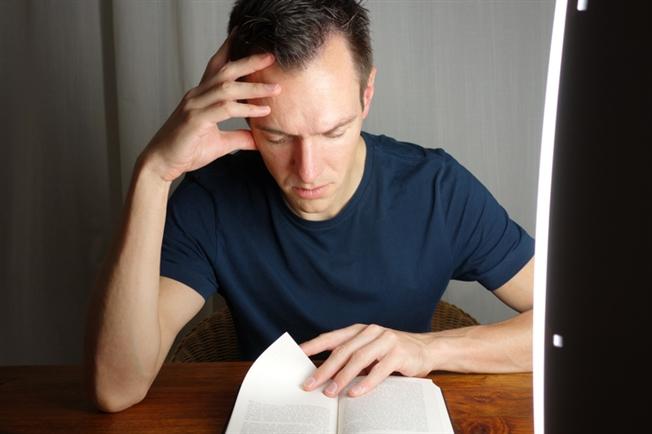Using light therapy to treat seasonal depression

Short of relocating to somewhere sunny and warm, there’s not much you can do to change winter’s cold, short days. But there are solutions for coping with the symptoms of seasonal affective disorder, or SAD, which affects millions of Americans every year.
SAD, a form of depression that occurs during the winter months, is marked by symptoms like changes in sleeping habits, weight gain, withdrawal from friends and family, and a loss of interest in activities you typically enjoy.
Individuals who suffer from SAD are often prescribed an anti-depressant and encouraged to make behavior changes, like following a healthy diet and exercising regularly—even when the temperature outside makes you crave comfort food and a day on the couch.
Another treatment option that’s garnered some attention in recent years is light therapy, which uses light boxes to combat the loss of sunlight during late fall and winter months.
“Less sunlight can prompt a change to our circadian rhythm, which regulates our sleep/wake cycles and can influence other factors like hormone release and body temperature,” explains Elizabeth Ziegler, MD, primary care physician at the Main Line Health Collegeville. “By using a light therapy box to simulate outdoor sunlight, you can stimulate a change in the brain that normalizes circadian rhythm and can help manage SAD symptoms.”
So, if the winter blues are a concern for you, should you be pursuing light therapy as a treatment option? While light therapy boxes can be beneficial, there are a few points to consider before you head out to find one.
Using light therapy
In searching for a light therapy box, look for a model that has been specifically designated for the treatment of seasonal depression. Most lamps emit 10,000 lux of light—about 20 times brighter than the light inside of your home or sunlight.
Regular household lamps, salt lamps, or lighting that is designated for other medical needs won’t offer the same health benefits as a light therapy box.
And, although you might be tempted to use a light therapy box all day, limit your usage to about a half hour every morning. This exposure should be enough to regulate your circadian rhythm.
“When you wake up, find time to read the newspaper, talk to family members, or just relax with the light on,” says Dr. Ziegler. “You don’t want to look directly at the light, so find another activity that you can do when you are using it.”
If you have a history of eye issues—including glaucoma or damage from diabetes—use caution when using a light therapy box and talk to your doctor before you begin light therapy.
Shedding ‘light’ on other options
While light therapy might sound enticing, Dr. Ziegler reminds patients that there are other options available, too.
“Depending on the severity of your symptoms, your doctor may recommend that you use other treatment modalities in conjunction with light therapy, or may recommend a more intense treatment altogether. Talk to your health care provider about your symptoms, so that they can help you determine the appropriate treatment method,” she says.
 Content you want, delivered to your inbox
Content you want, delivered to your inbox
Want to get the latest health and wellness articles delivered right to your inbox?
Subscribe to the Well Ahead Newsletter.
